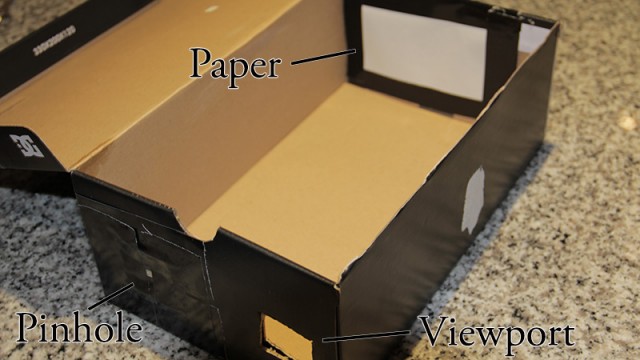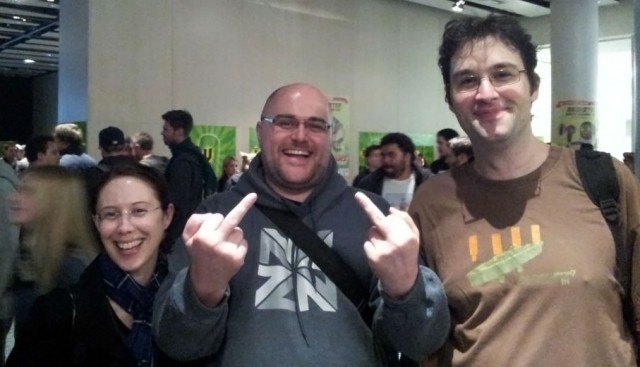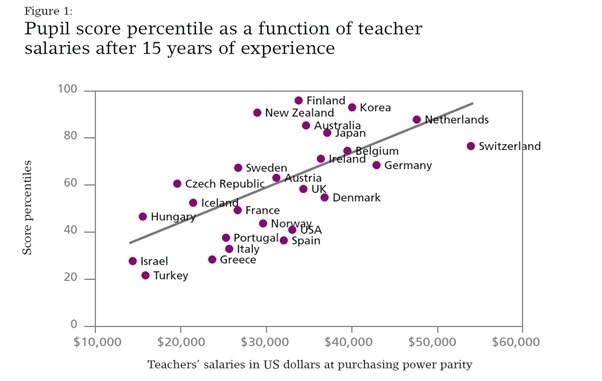David Cunliffe gave a speech at the Kensington Swan insolvency function in Auckland on 11 June, it’s a long read, but a good one.
It’s symptomatic of the Labour Party’s profound internal problems that Cunliffe isn’t already leader, I’d actually vote for them again if there was a prospect of his becoming prime minister. He seems like an incredibly sharp guy, optimistic that things can be put back on track, and with some actual ideas on how to do that – something we haven’t been seeing in any credible form from the jokers in the National Party.
TÄ“nÄ Koutou
Thank you for inviting me into the lion’s den.
As this is a group of insolvency and receivership lawyers and accountants, it’s a fair guess that your businesses will be booming right now.
If I was speaking to a group of exporters and manufacturers, it’s a fair bet the opposite would be true.
And if this was a group of blue collar workers from my electorate in west Auckland, you can bet your boots the mood would be grim.
So many Kiwis are really struggling to make ends meet. After the 2008 crash they were just getting along. A year later this had turned to anger, a year later to despair. This year, many of them are heading for the departure gate: 50,000 a year in the last year alone. A quarter of New Zealanders no longer live here.
So for their sake, and everyone’s sake, let’s begin this conversation by being frank and up-front.
We all know that much of the business community generally favours National.
Unfortunately, New Zealand is still a democracy, so Labour gets voted back in from time to time. That’s “tiresomeâ€! I know, but that’s the way it is.
So, what “evil plans†does Labour have in store for the business community this time? The answer might be welcome news for all but the insolvency team
Anyone who seriously believes that the economy can somehow heal itself by being left alone, hasn’t read a newspaper for the last 12 months.
Looking at world markets over the last few months, I would have to agree that we are “back at the precipice – with a frayed rope†(Brian Fallow, NZ Herald).
Greece may still reject its bailout package; Spanish banks are still in deep trouble; and Italy is too big to bail, or to let fail.
The Beehive spin doctors are all too ready to blame anyone but themselves for New Zealand’s repeated undershooting of growth forecasts. None of it washes.
The Canterbury earthquake rebuild should by now be a source of positive growth – but it is well behind schedule and the government is squarely to blame.
Commodity prices can’t be the problem. They have only just come off record highs, reminding us that putting all our cows in one basket is way too risky.
The results under the Key Government make depressing reading.
No one these days seriously believes that a totally unregulated economy will work. Just as important, no one seriously believes that a totally regulated economy will work. It’s a question of getting the balance right.
Do I want to return to the days when you needed a letter from your doctor before you could buy margarine? Absolutely not. Do I want to return to the days when people had a sense of security and trusted their leaders? Absolutely.
LESSONS FROM THE LAST GREAT DEPRESSION
It is said that “Those who cannot learn from history are doomed to repeat it.” (George Santayana); or in plain language… “History repeats itself because no one was listening the first time.”
One of the things that gets me up in the morning is the sentiment expressed in the media and in the current government that “nothing can be done so we may as well take it.â€
That we may as well accept appalling emigration levels, high unemployment and record high youth unemployment, an accelerating increase in poverty, and debt that leads to regular international credit downgrades.
We should expect more from each other than that.
There is absolutely no inevitability about economic decline.
We do face utterly fundamental choices about our economic future. Effective change will occur when tens of thousands of us behave differently in our firms and unions, boardrooms and Ministries, classrooms and farm sheds.
Of course it is easier to say what we should not do, than what we should do. So in these remarks I want to draw some lessons for what we should do differently:
1. Regulate Financial Markets
The Great Depression, for those who haven’t studied history, was caused by a lack of government regulation. Then, just like now, the vast majority of businessmen strongly resisted any attempt at government regulation.
Then, after the banks sent themselves bankrupt through unregulated speculation with their clients’ funds, the bankers tried to pretend that it wasn’t their fault.
The 1929 stock market crash triggered an economic tsunami that all but flattened America. Just like now, it was the ordinary people that bore the brunt of the crash and the depression that followed it.
And, as if the crash itself wasn’t bad enough, the government still refused to intervene, so the situation got worse. Bank after bank collapsed, along with the millions of families who had entrusted those bankers with their life savings.
By 1933, 11,000 of the United States’ 25,000 banks had failed. That’s nearly half.
People had no money, so they couldn’t buy manufactured goods. Because people stopped buying manufactured goods, factories closed down. Because factories closed down, workers got fired. Because workers got fired, they couldn’t buy manufactured goods.
And so it went on, and on, and on, until, by 1933, nearly 13 million Americans were unemployed. That was a quarter of the total workforce.
And what was the government’s response: <u>nothing</u>. Why? Because the government was intensely opposed to any kind of regulation of big business – the same view as many of the people in this room.
The then US Secretary of the Treasury was Andrew W. Mellon, who was, by curious coincidence, one of the wealthiest men in America.
Mellon strongly opposed government regulation of the banking sector. However, he strongly pushed for austerity measures to balance the budget. Does this sound familiar?
Mellon advised President Herbert Hoover to:
“liquidate labour, liquidate stocks, liquidate farmers, liquidate real estate… it will purge the rottenness out of the system. High costs of living and high living will come down. People will work harder, live a more moral life. Values will be adjusted, and enterprising people will pick up from less competent people.â€
Alas, no. What happened in America was exactly the same as is currently happening in Europe. The austerity measures, which were supposed to turn the economy around, instead sent it into a nosedive.
You know, one of the wonderful things about democracy, is that voters sometimes show a good deal more sanity than the politicians or the vested interests.
In America’s case, the voters threw out Herbert Hoover and voted in Franklin D. Roosevelt. Roosevelt heavily intervened in the economy, regulated the banks and the stockbrokers, and set America on the path of its longest period of economic growth in history.
I mention all this, because we are currently looking over the economic precipice once more. The world’s three largest economic zones: America, the European Union and Japan/China are already in decline.
And, amazingly, the economic purists in the West are still advocating exactly the same policies as the ones that caused the Great Depression. Really? Have we learned nothing from history?
Who carried the can when the whole house of cards came tumbling down? Certainly not the bankers that set up the house of cards in the first place. As usual, it’s the ordinary people, who pay taxes and naively expect politicians to look after their interests, who are paying the price.
Despite all the promises that the European economic austerity measures would turn this tragic situation around, the opposite is occurring.
When you start firing all your workers and closing down your government departments, those people have no money to spend. Because the workers have no money to spend, the local businesses suffer. So they start firing staff. So the economy goes into deep recession, with no easy way out.
The Labour team believes this is lunacy. If New Zealand goes into a recessionary spiral, what we are close to, we will have to be expansive too.
An increasing number of journalists and politicians are saying what ordinary people already know: that many of the economic policies of the last 30 years have ended in disaster.
You hear the National government taking about the need to sell assets because we have so little money in this country. Do you know why we have so little money in this country? It’s because a large percentage of our economic assets are overseas-owned.
For example, when the Australian-owned banks make billions in profits here, that money isn’t returned to New Zealanders. The money goes straight back overseas.
That financial drain is one of the main reasons we are not paying our way in the world – our external deficit is getting bigger and bigger.
2. Keep and build our assets
And, as if that were not bad enough, the government now wants to sell our major state assets, which is simply going to mean higher power prices for ordinary New Zealanders and still more profits disappearing overseas.
And I’m not the only one who thinks this is nuts. The economic consultants BERL, concluded that the asset sales programme would leave the public accounts looking worse, not better.
BERL’s chief economist, Dr Ganesh Nana, concluded the effect of asset sales on the wider economy would be even worse because the dividends lost to the state would quite likely go to foreign shareholders, adding to the country’s external deficit and national debt.
So why is National proceeding? Is it partly because of its promises to big business? It is partly because many National Party politicians may have links to the very people who will profit from these asset sales? Or partly because the National Party is simply blind?
No matter how many independent analysts report that the asset sales will be an economic disaster that will further increase our national debt, John Key simply looks the other way.
For how much longer, I’m not so sure. I think it’s increasingly obvious that the National government will be dog tucker at the next election. National is hoping that by then, the assets will have been sold and there’ll be nothing we can do about it.
Be that as it may, don’t get me started on the risks of selling off a major stake in our energy system at a time when the world is entering unparalleled energy scarcity and skyrocketing fossil fuel prices – that is the subject of another speech!
3. Get people back to work
If the last Great Depression provides some chilling lessons of what went wrong, it also provides hope for what can be done better.
Much of New Zealand’s response to the Depression in the 1930s and early 40’s is still working for us:
• Around 50% of the state houses still around now were built in the 1930s and 1940s
• Around 40% of all schools still in use were built in this era
• Almost all the North Island dams, and the same of the pylons and substations
• Thousands of rural bridges
• Most of Auckland’s water supply dams and systems
• The core of the Crown Research Agencies, in the form of the DSIR
• Around half of New Zealand’s still-existing hospitals,
• The great North Island pine forests, and
• Most of our government departments now existing were formed, all in that era
Eighty years ago we saw an economic development plan rolled out that turned us all from Depression to development. Like the United States New Deal, the Savage government’s plan altered the course of the country.
For at least 30 years after the end of World War II until the oil shocks of the 1970s, the Government response to the Great Depression still dominated political and commercial life.
In the 1960s, business and the public sector continued this partnership with the great Kinleith Mill near Taupo, and New Zealand Steel at Glenbrook.
Private capital was making money at the same time as the public sector achieved its policy goals.
By the 1980s, the whole system was in need of reform. However, in place of reform, we got a system that closed down productive industries, encouraged energy wastage, created massive unemployment and, above all handed most of the wealth and power to a small elite who the so-called ‘free’ market.
It was this unregulated market that lead to the twin meltdowns; first the 1987 stock market crash, then the 2008 meltdown. Since 2008, the scale of our decline has been substantial.
Throughout the world, pro-business governments have imposed austerity measures and throughout the world, these austerity measures have been an unmitigated disaster.
We need to think with that degree of boldness and clarity, while carefully managing our financial resources, to truly turn back the degree of risk and decline that we now face.
4. Rewrite the invisible plan
By contrast, National is nothing if not predictable in its policies and in its results. From 1990 to 1999, and from 2008 to 2012, the same economic leadership and same result:
• Almost no economic growth
• Public sector cost-cutting that drove recession ever-deeper
• A state that is weaker year after year, and
• A country where wealth transferred from the many to the few, to the point where law firms find it harder and harder to get clients, except in the Receivership Team.
Business is bad. And it was bad the last time National was in, and it’s no coincidence.
Let’s project the same policies after another three years. Here’s how it runs. Treasury again over-predicts GDP growth and hence tax-base income. Private debt remains high and focused on rental housing. The population stagnates and starts to decline even in Auckland.
Respectfully, a buoyant insolvency and mortgagee sector is not the economic sign we want. On the track we are on, it’s what we will get.
When the credit ratings agencies downgraded New Zealand last year, they told us that our biggest problem was not public debt, which is relatively small by world standards, but total private debt and our inability to pay our way in the world.
A new direction is needed.
Let’s not fool ourselves that just doing a little more or a little less of what we have been doing before will save us
LESSONS FROM SMALL SMART COUNTRIES
Small smart countries around the world are grappling with the same issues – how to sustainably grow jobs and incomes in an open, export-oriented economy amid a turbulent world market.
As part of my Economic Development portfolio work, I have commissioned a study of six such countries: Denmark, Finland, Singapore, Taiwan, Ireland and Israel.
The most obvious conclusion of this study so far is that none of them leave their future to chance. The weakest, Ireland, was the one that lowered taxes, opened up to unrestrained foreign investment, and trusted the invisible hand of the market to bring future prosperity.
But whether they have governments of the centre-left or centre-right, all these countries have set a clear vision for where they want to get to, what they want to be, and how they will get there. All set policy targets and timetables and measure their progress.
Take Denmark. It wants to be among the top 10 richest, most innovative countries in the world. It wants to be top 10 for quality labour supply and top three for renewable energy.
They have a 10 year plan to achieve that.
They manage their interest rates, control their housing market, and peg their exchange rate to the Euro.
They manage productivity growth by setting hard targets for education, research and innovation performance, for example:
They invest 3% of their national income in research and development: 2% from the private sector and 1% from the public. That is still dwarfed by neighbour Finland with nearly 4%. New Zealand’s total is less than 1%.
Their innovation strategy is led by the Danish Economic Council, a broad-based top level group including key government agencies, business and labour representatives, and labour experts.
They are careful with their money, and they understand the value of investment.
They invest in research and development, they invest in their infrastructure, they invest in their forests and their environment, but most of all they invest in their people.
To the Danes, investing in education, innovation and infrastructure, is not a liability but an asset. Because without all three, their economy cannot survive.
Is it working? You be the judge – they have fewer natural resources than us, higher population density, and a rubbish climate.
But their income per person is US$40,169 compared to our US$29,882.
Even more importantly, their exports per person are around NZ$ 26,000, compared to our NZ$9,000.
They gain about the same amount from agriculture as us, but many times more from niche manufacturing, environmental services and high technology.
Let’s acknowledge that Denmark is a member of the largest economic union on the planet and has the captive market that comes with that.
Labour under the leadership of both Phil Goff and Helen Clark had a proud record of responsibly improving our trade access. Labour also pushed for environment and labour standards in trade agreements, something we will need to continue to advocate in future.
INVESTMENT, INNOVATION, AND EDUCATION
We need to learn from small smart economies like Denmark. We cannot just leave it to chance, or to the market forces that have got us into this mess.
So Labour went into the last election campaigning for new and better ways to grow our economy.
At the core of our economy-wide measures were big changes to boost capital for business investment, technology and skills. These are the fundamental drivers of productivity.
Our Leader, David Shearer, and Finance Spokesperson, David Parker, have both recently reaffirmed the importance of these changes.
While John Key was hard at work lining his own pockets, David Shearer was getting his hands dirty, feeding and sheltering the people in some of the most depressing and dangerous places on earth. He managed billions of dollars of tax-payers funds with consummate skill, fought corruption and faced down warlords.
Which party leader do you think is better suited to lead us through this time of crisis?
So what will Labour do that shows we have learned the lessons of history?
Number one, we will have to stop the sort of speculation that got us into this mess in the first place.
We have to get investment flowing where it can do the most good – into productive businesses and exports, rather than unproductive financial or property speculation. Like both Treasury and the Reserve Bank, Labour supports a capital gains tax.
Now, nobody in this room, myself included, likes paying tax. And nobody in this room, myself included, likes seeing their hard-earned tax revenue wasted.
I think we all agree that the tax system has to be simple, transparent and achievable.
For example France and Germany are now looking at simplified forms of indirect taxation, such as a financial transactions levy.
It would be so small that most bank users would never even notice it, would be simple to collect, and would raise enough revenue to fund lowering other taxes while fully funding infrastructure development without incurring further public debt. I am delighted that our revenue Spokesperson, David Clark, is keeping a weather eye on these developments.
Another tragic result of the so-called free market is that, the country is now saddled with the multibillion dollar liability of supporting the casualties of this economic religion – the long term unemployed, the single parent families, the pensioners who can no longer afford to warm their houses.
Any economic policy that does not put the unemployed back to work, rebuild the productive sector and help us to pay our way in the world is doomed to failure, and very expensive failure at that.
The current government said they wanted New Zealand to catch up to Australia.
Well it’s working: every week, thousands of Kiwis leave the country in search of a better life across the Tasman.
Why? Because they get paid so much more in Australia. Why are wages higher in Australia? Because the Australian government sees it’s working people as an asset, not a liability.
What’s the National Government’s solution to this – to lower wages still further while doing nothing to improve productivity. Genius.
Clearly no-one told Steven Joyce that Germany, one of the wealthiest countries on the planet, has both high wages and high productivity.
National has again walked away from common sense. One of the key ingredients to Australia’s success has been its compulsory, employment based savings scheme.
Because New Zealand’s workers don’t earn enough to save, the country’s vital savings pool is alarmingly small.
So our second major policy is to lift sustainable local savings and investment is a universal Kiwisaver scheme. This would hike our savings rate four times faster than National’s pallid plan and give every working Kiwi a huge nest egg for their retirement.
To make matters worse, National’s approach to superannuation resembles a man on an iceberg in the sun. He thinks he is on solid ground, but he has built his future on some tragically false assumptions.
The third big policy change from Labour is getting our innovation engine revving. At the moment it is hardly even idling. Total research and development investment in NZ is less than 1% . In Denmark it is 3%. In Finland they are targeting 4% .
Our innovators deserve a break – there are huge public benefits from a vibrant innovation system, and our proposed R and D tax credits reflect that.
By supporting research and development in our business community, we invest in the pillars of economic growth, innovation, education and innovation.
As Economic Development spokesperson, I will be pushing for much higher levels of investment in research and development in both the public and private sector and for a serious overhaul of our innovation ecosystem.
Remember that infrastructure is not just bricks and mortar. Our future depends on having a world class information backbone.
It is a crying shame that it took the current government nearly three years to even begin rolling out its so-called ultra-fast broadband plan. If three years delay is ultra-fast, I’d hate to see ultra-slow.
Fourth, we never forget that our best resource is our people. Education and skills must be a top priority and it must be for all – not just those who can afford them. These three pillars of skills are education skills, physical skills and life skills.
It disgusts me that the National cabinet was prepared to maintain subsidies for their own private schools while firing teachers in everyone else’s schools.
How would Labour fund further investment in education? The answer is simple: stop investing in failure. It is social and economic insanity to be paying people the dole while there are forests to be planted and infrastructure to be built.
Labour will get school leavers off the dole by ensuring a seamless transition into work. We will fund thousands of new apprenticeships by redirecting dole money to job creation with real skills. We will ensure that every young New Zealander under 20 is either earning or learning.
In the twenty first century no-one should expect to be in one job for their whole working life. That’s why learning must be life-long. Denmark invests bullions each year into adult and community education, in New Zealand we invest pocket money.
LESSONS FROM THE GRASS ROOTS
Our economy, under National, is like an oil tanker with the captain asleep at the wheel.
Robert Wade, a New Zealand professor at The London School of Economics, summed up how governments should work with their economies. I’ve paraphrased his views:
When the economy is working well, leave it alone.
When the economy has problems or failures that can be fixed, fix them.
And when an economic policy fails altogether, do something else.
Sounds like common sense to me.
A key lesson of the Great Depression is that unregulated financial markets invariably suffer catastrophic failure. The recent Global Financial Crisis is a classic example.
From New Zealand’s economic development perspective, we can turn around the failed policies of the past.
So that means working with individual industries, regions, businesses and communities to help make good things happen.
You have a build a wall one brick at a time.
You have to build a business one customer at a time.
We have to build our economy one region and one industry at a time.
And we must rebuild our community one family at a time.
So we could have all the fine ideas in the world about economic growth, but if it does not put one unemployed worker into a job, or put one more high value product into an export market, then it will not turn our economic boat around.
Renewing our commitment to industry sectors, regions and communities, will be a key part of Labour’s economic development agenda…
I know it’s trendy to talk about recycling. But we’ve overlooked something here. What about “recycling†human beings? There isn’t a person in this room that isn’t deeply concerned at the numbers of young people, especially young MÄori and Pasifika who are not only unemployed, but in some cases, currently considered by some to be “unemployableâ€.
We also have vast tracts of public and private land that is currently badly under-utilised.
Can we please, please, learn some lessons from history. Where did New Zealand’s great commercial forests come from? Where did America’s great commercial forests come from? They were both planted in the Great Depression by the unemployed.
The American Civilian Conservation Corps is a textbook case of turning the economy around by turning people’s lives around.
Throughout America, these groups planted trees, built roads and improved both their lives and the lives of their descendants.
Labour embraced the Conservation Corp idea in our last manifesto. For Labour, the Conservation Corp has always been about skills and training, with the community benefitting. I’ll bet someone will claim that National’s already proposed this. Nonsense. What National wants is to punish the poor and prepare them for a life of dead-end jobs as lowly servants of the rich and powerful.
Instead of merely paying the dole to fit young people, Labour’s Conservation Corps plan includes education and training that will take them on to sustainable employment. I’d like to see them earning a living wage in return for a fair day’s work.
They could learn structure, discipline and life skills. They could then be sent out to do the work that’s currently not being done, from planting trees to disaster relief. Imagine, for example, the difference it would have made if we had had 5000 fit young people available for disaster relief after the Christchurch quake.
New Zealanders loved the Student Volunteer Army and the Farmy Army that helped clean up Christchurch. However, the famers and the students soon had to go back to work. Imagine the difference a full time group would have made?
It’s not just the country that would have benefited, either. Hard work is a great healer for unemployed lives. With training, this same army could now be rebuilding the houses that the Christchurch people so desperately need.
But for now, New Zealand needs more forests. If we could replant some of our unproductive land into forests, we could create one of the world’s greatest carbon sinks. We could create thousands of jobs planting trees, and thousands more processing the timber in a few years.
These new forests could be placed in trust for the benefit of future generations, and New Zealand could be on its way towards becoming carbon neutral.
However, there’s a deeper problem with our current forestry sector: most of the timber simply gets shipped overseas for processing. This robs New Zealanders of jobs and export revenue.
Because many of our best forests are overseas owned, by companies that have absolutely no interest in New Zealand jobs.
Labour is keen to see higher levels of value added in our primary sector, and as Economic Development Spokesperson I am going to be pushing to get New Zealand logs processed in New Zealand mills.
CONCLUSION
While politicians squabble about balancing the government’s books, our ship is in dangerous waters.
The Labour Party is not your enemy.
Your enemy is inefficiency, corruption, and the wastage of both public and private wealth.
Your enemy is a cosy corruption that helps a few friends of the government get very rich at the expense of the community, including most of the business community.
The three pillars of our survival are investment, innovation and education.
An educated population that earns decent wages will work in your factories and offices, will buy your products, and invest in your shares.
Even as we speak, the global crisis deepens. We cannot solve the crisis of the present by repeating the failures of the past.
New Zealand rose to the challenge of the Great Depression and emerged as a prosperous and functional democracy that was the envy of the world.
There are no winning sides on a sinking ship. While we squabble on the deck, our situation grows graver every day.
Our ship cannot sail itself. We can’t wait for the crisis to overwhelm us before we respond.
A global economic tsunami could sink us. We have to work as a team; rather, we have to work as a crew, remembering that we’re all in this together. We all prosper together or we all sink together.
Thank you.









